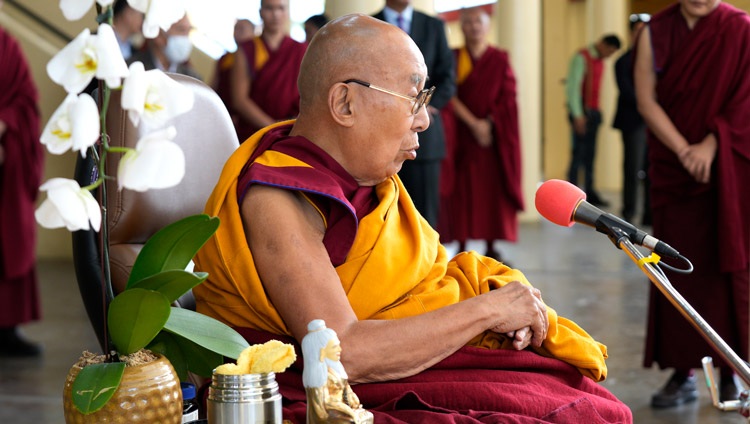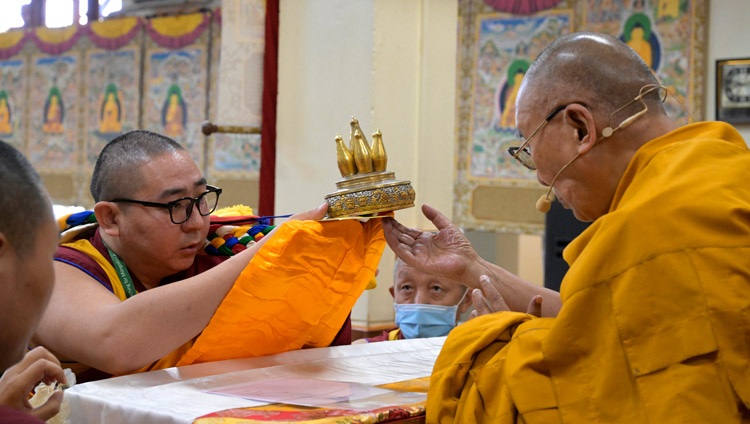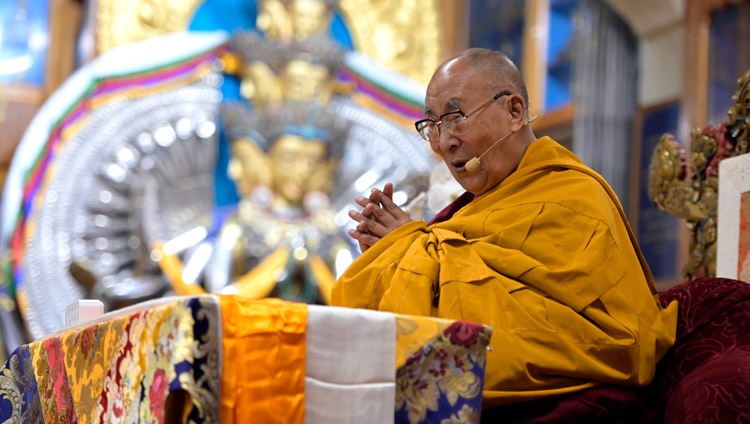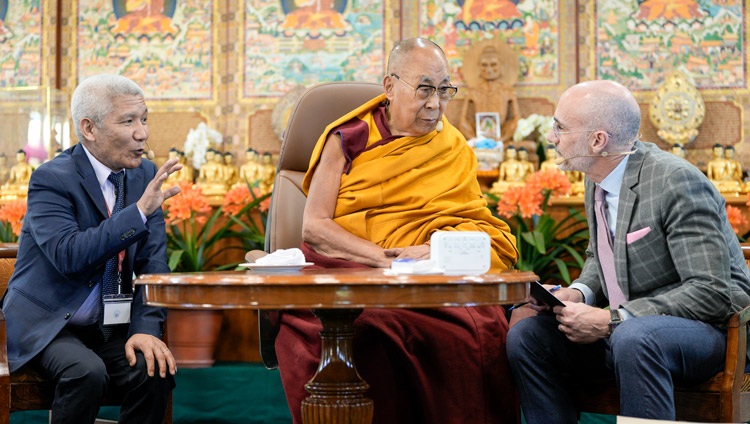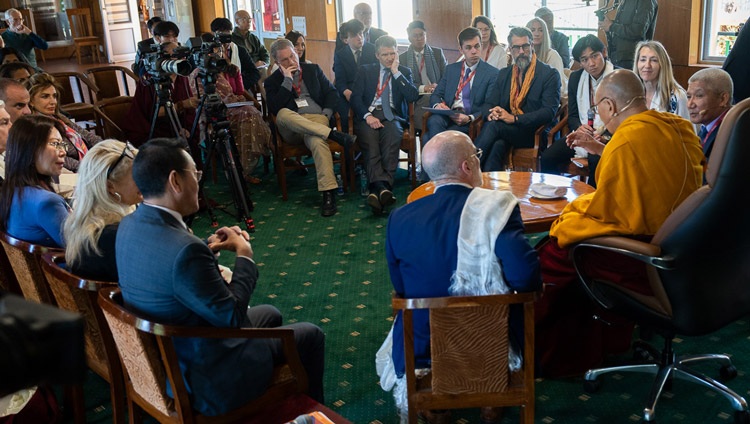Second Day of Talking to Vidyaloke Shishyas
December 9, 2017
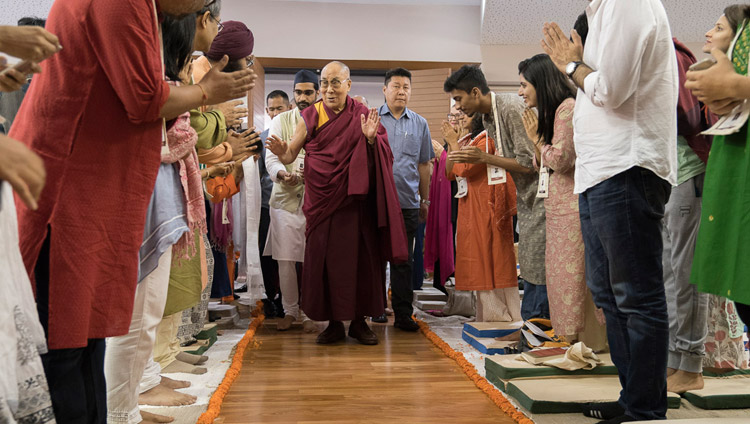
“Today, we’ll look at essential points in this text,” he told them. “And because my English is inadequate, I will say what I have to say in Tibetan.”
He repeated what he touched on yesterday that the first turning of the wheel of dharma dealt with the Buddha’s revealing the Four Noble Truths. He mentioned the 16 characteristics of these truths and clarified that the four characteristics of the truth of suffering were impermanence, suffering, emptiness and selflessness. He discussed different aspects of impermanence, not only the way things arise, abide, decay and disintegrate, but also the way they are subject to momentary change. He added that because it is subject to karma and destructive emotions, our very existence is in the nature of suffering.
Suffering is empty of being an entity separate from the mind-body combination. Its selflessness refers to a more subtle absence of a self-sufficient, substantially existent self. This was explained in greater detail in the second turning of the wheel, when the Buddha explained the perfection of wisdom. It is referred to in the ‘Heart Sutra’ where the five psycho-physical aggregates are described as also lacking any independent self. The person based on the five aggregates is empty of intrinsic existence, but so too are the aggregates.
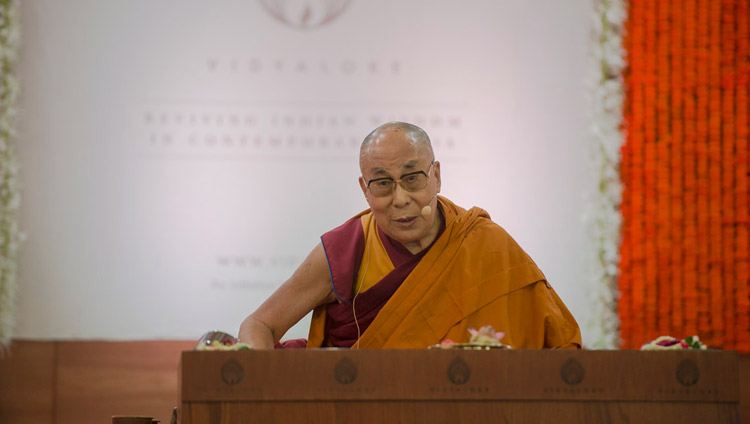
Both the Mind Only and Middle Way Schools of thought assert the selflessness of phenomena. In his Precious Garland, Nagarjuna says,
As long as there is grasping for the aggregates,
So long is there grasping at the self.
Further, when there is grasping at self,
There is action, and from that there is also birth.
“Forty years or so ago, I had some insight into selflessness,” His Holiness revealed, “but when I examined it more carefully I realized that it was one thing to think of the lack of a self of persons, but more difficult to apply this to phenomena. Mine was a coarse understanding. It’s necessary to realize both the selflessness of persons and phenomena.
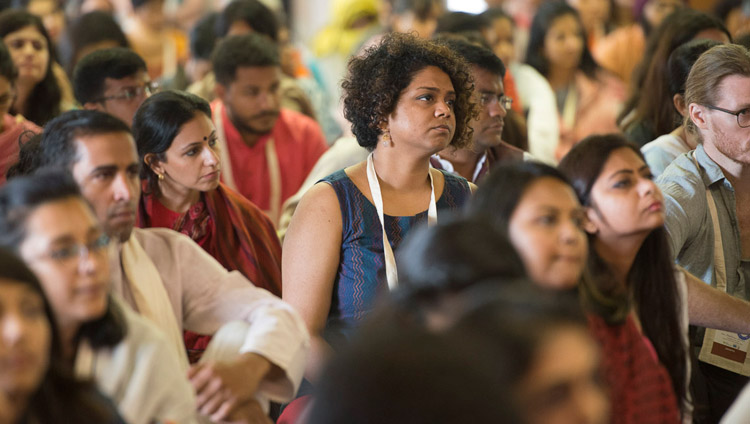
“The Consequentialist Middle Way School doesn’t admit even a particle of intrinsic existence, nor does it accept a difference in subtlety between the selflessness of the person or phenomena, there is only a difference of object. The ground, path and result have no intrinsic existence, they exist as mere names. Nothing has any solid intrinsic entity, although that’s how things appear to exist. Understanding this helps reduce the exaggerated way we view things.”
Opening Shantideva’s ‘Way of the Bodhisattva’ at Chapter Nine, the chapter concerning wisdom, His Holiness read the first two verses: ‘All these branches of the doctrine the Enlightened Sage expounded for the sake of wisdom. Therefore those who wish to put an end of suffering must cultivate this wisdom. The two truths are declared to be relative and ultimate, but the ultimate is not within the reach of intellect, for the intellect is said to be relative.’
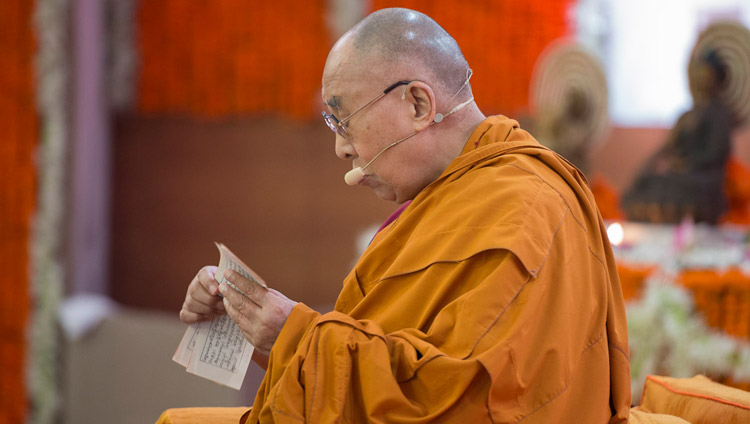
His Holiness concluded by reciting two verses from Nagarjuna’s ‘Fundamental Wisdom of the Middle Way’:
That which is dependent origination
Is explained to be emptiness.
That, being a dependent designation,
Is itself the middle way.
There does not exist anything
That is not dependently arisen.
Therefore there does not exist anything
That is not empty.
During a break for tea, the Geshes and other qualified teachers who have been leading the afternoon review sessions gathered round His Holiness to hear his thoughts on how to revive ancient Indian knowledge in India. He told them to pay particular attention to the ancient Indian traditions of logic and epistemology, as well as the understanding of the workings of the mind and emotions. This is what he feels is relevant to people’s needs today.
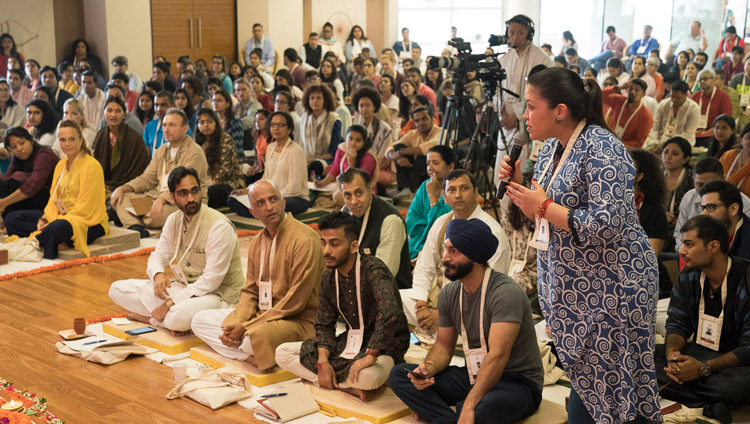
In answering questions from the audience, His Holiness clarified that emptiness does not imply nothingness. It refers to an absence of independent existence. He encouraged the questioner to ask herself, who asked the question? Is the self the body, a part of the body, or the owner of the body? He quoted Je Tsongkhapa’s ‘In Praise of Dependent Origination’,
Whatever degenerations there are in the world,
The root of all these is ignorance;
You taught that it is dependent origination,
The seeing of which will undo this ignorance.
A psychologist asked about teaching children about compassion in the face of opposition from the authorities. His Holiness encouraged her to adopt a secular approach relying on scientific findings, common sense and common experience. Another questioner raised the issue of the world’s ever increasing population. His Holiness agreed that it is a serious problem, along with dwindling natural resources. While birth control offers a solution, he jokingly suggested it could be non-violently implemented if more people became monks and nuns.
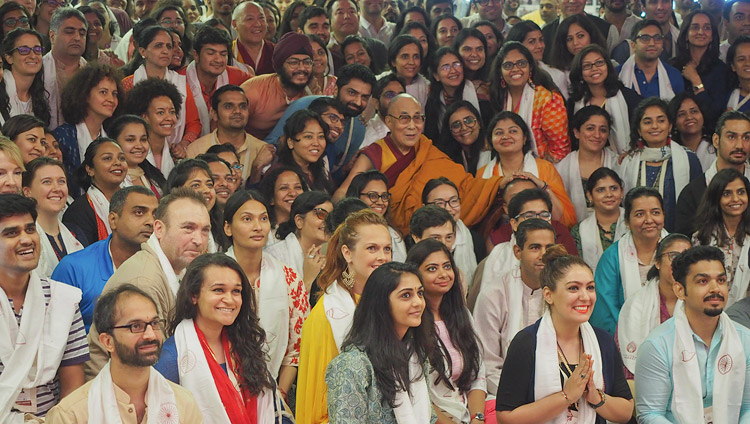
Invited to explain how to tackle destructive emotions, His Holiness recommended gaining familiarity with their opposing forces. This also entails reflecting on the drawbacks, for example, of anger. Anger is always negative. It destroys our peace of mind. When we are angry, we have no interest in seeing even our best friend. He pointed out that Chapter Six of the ‘Way of the Bodhisattva’ deals in detail with patience—the opposite of anger. Anger often accompanies a strong sense of self-centredness. Chapter Eight of the same book goes to great lengths to explain the disadvantages of self-cherishing and the advantages of concern for others.
Whatever joy there is in this world
All comes from desiring others to be happy,
And whatever suffering there is in this world
All comes from desiring myself to be happy.
Coming to the end of the session, His Holiness expressed the hope that those in the audience had found something to inspire them in what they had heard. He thanked Veer Singh for providing him with the opportunity to share his thoughts. A group photograph was taken before everyone moved to the Chanakya building to eat lunch together.
Tomorrow, His Holiness will be giving a public talk on reviving Indian wisdom in a contemporary world.
Source: https://www.dalailama.com/news/2017/second-day-of-talking-to-vidyaloke-shishyas

